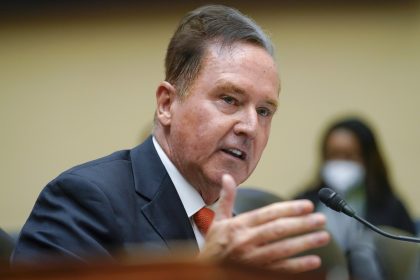U.S. Could Hit Debt Limit by Next Month

WASHINGTON — The Bipartisan Policy Center, a D.C.-based think tank, released an analysis on Friday projecting that the United States’ debt limit “X Date” will likely arrive between mid-October and mid-November of this year.
The so-called x date represents the day on which the United States government is unable to meet all its obligations in full and on time. The debt limit —which is mandated by law — limits the amount of money that the federal government can legally borrow, according to BPC.
“Given the current pace of federal spending and revenues, we are reasonably confident that the X Date won’t arrive before the start of the fiscal year, or even the week or so following,” Shai Akabas, BPC director of economic policy, said in a written statement. “But the train could go off the rails shortly thereafter, and just because Congress has a bit more breathing room than previously expected, doesn’t mean lawmakers need to use it.”
The country’s debt limit was reinstated on Aug.1 at $28.4 trillion after a two-year suspension. Since its reinstatement, the Department of the Treasury has utilized a series of measures to keep the country solvent but will likely be unable to continue to do so without congressional action.
Democrats will not be including a provision to increase the federal government’s borrowing limit in their looming $3.5 trillion social benefits package, House Speaker Nancy Pelosi told reporters on Capitol Hill on Wednesday. Democrats could likely raise the debt limit through reconciliation tactics and without GOP support in either chamber of Congress.
“Yields are rising on some short-term Treasury securities, indicating that financial markets are already concerned and that extended congressional negotiations are themselves costing federal taxpayers money,” Akabas said in a written statement. “Only timely legislative action can address the serious economic risks associated with failing to make good on our commitments.”
Republicans have indicated they would not support an increase to the debt limit unless Democrats comply with a series of debt reduction measures and spending cuts. Democrats, on the other hand, have pressed their GOP colleagues on the trillions added to the debt under former President Donald Trump which required lawmakers to raise the debt limit twice before suspending it in 2019.
BPC had previously projected the X date would arrive in fall 2021 but has since adjusted its estimate based on current economic trends. Multiple factors still at play could impact the eventual arrival of the X date, including September quarterly tax revenues and the scale of forthcoming federal pandemic relief payments.
“After the debt limit was reinstated on Aug. 1, Treasury began employing certain extraordinary measures to continue to finance the government on a temporary basis,” Treasury Secretary Janet Yellen said in a written statement.
“These measures, which are authorized by law and have been used in previous debt limit impasses, include a suspension of certain investments in the Civil Service Retirement and Disability Fund, the Postal Service Retiree Health Benefits Fund, and the Government Securities Investment Fund of the Federal Employees’ Retirement System Thrift Savings Plan. Once all available measures and cash on hand are fully exhausted, the United States of America would be unable to meet its obligations for the first time in our history.”
Should the U.S. default on its debt, it would have a potentially catastrophic effect on financial markets and the global economy, according to BPC. The Treasury Department could in turn begin prioritizing some payments — such as Social Security, Medicare, Medicaid, critical national defense payments and salaries for the military — while simultaneously declining other payments.
While there is “no legal precedent for choosing to pay certain bills before others,” legal battles over which payments should receive government prioritization would likely be immediate, according to BPC. Further, the discrepancy between federal expenditures and revenues would mean either a significant portion of bills would go unpaid until the debt limit is extended or delayed payments would quickly accumulate.
“We have learned from past debt limit impasses that waiting until the last minute to suspend or increase the debt limit can cause serious harm to business and consumer confidence, raise short-term borrowing costs for taxpayers, and negatively impact the credit rating of the United States,” Yellen said in a written statement.
“A delay that calls into question the federal government’s ability to meet all its obligations would likely cause irreparable damage to the U.S. economy and global financial markets. At a time when American families, communities, and businesses are still suffering from the effects of the ongoing global pandemic, it would be particularly irresponsible to put the full faith and credit of the United States at risk.”























